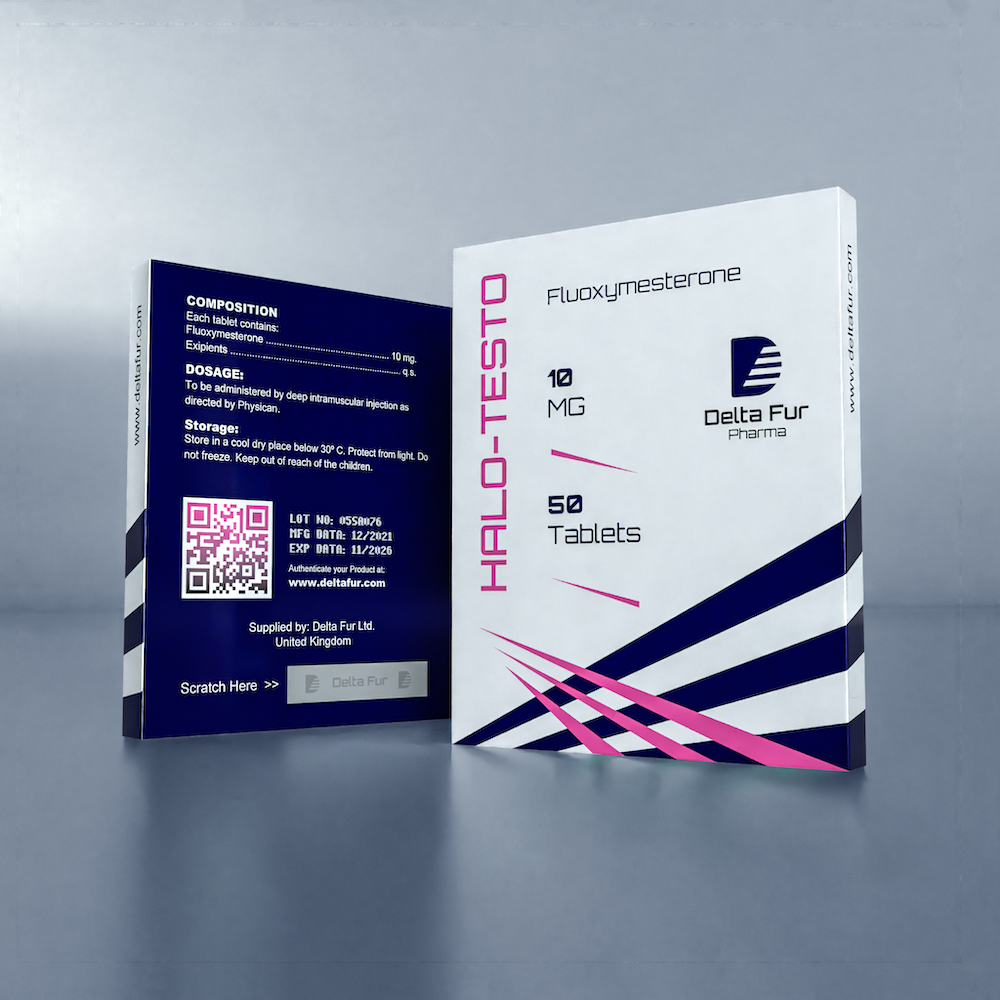Fluoxymesterone, sold under the
brand names Halotestin and Ultandren among others, is an androgen and anabolic steroid (AAS) medication which is used in the treatment of low testosterone levels in men, delayed puberty in boys, breast cancer in women, and anemia.[1] It is taken by mouth.[1]
fluoxymesterone include symptoms of masculinization like acne, increased hair growth, voice changes, and increased sexual desire.[1] It can also cause liver damage and cardiovascular side effects like high blood pressure.[1][6][7] The drug is a synthetic androgen and anabolic steroid and hence is an agonist of the androgen receptor (AR), the biological target of androgens like testosterone and dihydrotestosterone (DHT).[1][8] It has strong androgenic effects and moderate anabolic effects, which make it useful for producing masculinization.[1][9]
Fluoxymesterone was first described in 1956 and was introduced for medical use in 1957.[1][10] In addition to its medical use, fluoxymesterone is used to improve physique and performance.[1] The drug is a controlled substance in many countries and so non-medical use is generally illicit.[1]
Medical uses Edit
Fluoxymesterone is or has been used in the treatment of hypogonadism, delayed puberty, and anemia in males and the treatment of breast cancer in women.[1][11] It is specifically approved in one or more countries for the treatment of hypogonadism in men, delayed puberty in boys, and breast cancer in women.[12] Current prescribing guidelines in the United States list only the treatment of androgen deficiency in males and breast cancer in females as indications.[1]
Fluoxymesterone is less effective in inducing masculinization than testosterone, but is useful for maintaining established masculinization in adults.
Available forms Edit
Fluoxymesterone is available in the form of 2, 5, and 10 mg oral tablets.
Non-medical uses Edit
Fluoxymesterone is used for physique- and performance-enhancing purposes by competitive athletes, bodybuilders, and powerlifters.
Side effects Edit
Side effects that have been associated with fluoxymesterone include acne, edema, seborrhea/seborrheic dermatitis, alopecia, hirsutism, voice deepening, virilization in general, flushing, gynecomastia, breast pain, menstrual disturbances, hypogonadism, testicular atrophy, clitoral enlargement, penile enlargement, priapism, increased aggressiveness, prostate enlargement, cardiovascular toxicity, and hepatotoxicity, among others.


